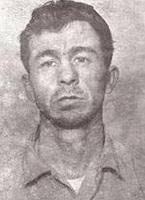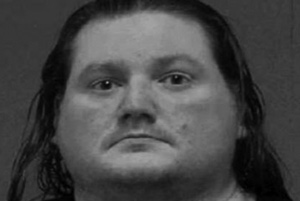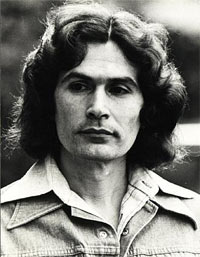Donald Henry Gaskins was a serial killer of absolutely ugly dimensions who ruled the Deep South with an unimaginable terror. South Carolina was an unsafe place to be looking for a ride on the highway, especially from 1955 through to 1977. The target of Gaskins’s murders was principally women, although the motivation is unclear. His early petty theft career landed him in dark places, where a career in murder soon started. An early marriage and parenthood didn’t soften a lifetime of brutal aggression.

Gaskins started out life diminutive and not particularly brainy. But not every man five feet four inches commits serial murder. Adolescent assault on women triggered a reform school and incarceration climate where sexual abuse due to his size was unavoidable. But knowing how this might come to pass, why did Gaskins commit crime after crime that would railroad him toward the very confinement that would institute his sexual abuse? Gaskins did as much to pursue a path of positioning himself in abusive conditions as possible.
Gaskins claimed a deep hatred of women but the origin is not certain. Gaskin’s killings were so numerous he is termed by many criminologists as a mass murderer. Did Gaskins’ physique determine his outcome in life, or did his psyche merely condition him for a lifetime of misguided aggression to take the life of others? Was Gaskins headed down the road of a psychotic criminal and serial murderer no matter what his height?
Called “Pee Wee” for his physically diminutive stature, Gaskins was part of a set of boys known as the Trouble Trio and was soon committing burglaries and other crimes with them. One burglary too many resulted in a former schoolmate recognizing him, and the law intervened. Donald Henry Gaskins was a product of the juvenile home for boys called the South Carolina Industrial School for Boys. In this facility until age eighteen, Gaskins was sexually abused in a homosexual manner of rape. Yet his homicidal aggression does not stem strictly from this period.
By the age of eighteen, Pee Wee was free and committing more crimes. Donald Henry Gaskins started bad and got worse. Stealing the tobacco he was paid to farm, Gaskins set fire to the storage barns to cloud suspicion. Continuing incarceration earned Gaskins a taste for violence. Gaskins was arrested not just for arson but for assault and murder of his employer’s daughter. Petty theft and fencing stolen goods was his main means of employment. Pee-wee chose victims according to motives of pleasure or some kind of mood where irritation caused him to kill the instigator.
Legal plea bargaining reduced his sentence to five years. Gaskins was so contrary to his own interests he swore at the judge and got another year tacked onto his sentence. Gaskins was moving towards being a brutal and remorseless killer of any type of victim. Donald Henry Gaskins use food, guns, explosives, any type of killing that suited his mood or the situation. Like many serial killers, his incarceration bred a fantasy tale of additional murders and a bursting body count as the years went on.
A pattern of rape within incarceration was now set. Gaskins killed the man responsible and got more jail time as a result. He escaped once in 1955, but was caught driving a stolen car. After his eventual release he was caught and charged with statutory rape of a twelve year old girl while driving for a preacher. Gaskins escaped a courthouse and joined a traveling carnival but was recaptured. By 1969 Donald Henry Gaskins was a serial killer with a dispassionate amoral mentality. Gaskins’ combined hatred of women had formed by then into a full fledged ruthless psychopath, carving a bloody trail on the South Carolina highways.
Gaskins had metamorphosed into a personality who split his kills between two categories. Gaskins committed murder on the “coastal kills”, or prowling victims for his sexual pleasure. These might be of either gender. But Gaskins committed killings of “serious” victims, people he knew and had some aim or intention of killing. Gaskins experienced a vision of his “soul” that he claimed furnished an enabling distinction between those who deserved life and death. Gaskins was prolific enough that personal motivation and random killing led him to multiple life-taking crimes.
The statements Gaskins made regarding his personal accountability lay waste to the collected studies of behavior and biological criminologists. Gaskins claimed he was one of the few “that truly understands what death and pain are all about. I have a special kind of mind that allows me to give myself permission to kill”. Gaskins’s delusion of homicidal grandeur led him on unlimited killing sprees without end. Only his carelessness and bad attitude fingered him for law enforcement as the culprit for the horrific serial murders that kept South Carolina residents terrified.
Gaskins murdered his own fifteen year old niece after raping her in 1970. Janice Kirby’s friend Patricia was seventeen and joined her in death that day. When a woman named Martha started cruising Gaskins at his part time auto repair job, he killed her as well. In December of that year Gaskins killed a thirteen old, and another man was sentenced to life for it even though Gaskins confessed.
Once again the practices of law enforcement and the nature of forensics and the legal system were manipulated by a serial murderer. Donald Henry Gaskins finally entered his last era of incarceration after decades of hitchhiker killing in South Carolina. Residents of the deep South were constantly dismayed and unhappy that highway pedestrians and others of all types disappeared constantly.
Pee Wee may have been diminutive in size but made up for any feelings of insecurity with a sizable number of victims. In 1973 Pee Wee Gaskins killed a woman and her twenty month old child. Gaskins raped both of them before they died. Gaskins termed 1975 his most successful and prolific serial killing rampage, deeming it his “killingest”. Pee Wee ultimately turned his habit for profit, finding a contract murder assignment and getting help to get rid of the bodies.
Walter Neely was a man who had met and helped Gaskins. Neely had a grasping ex-wife who was privy to many details and when she and her boyfriend tried to blackmail Gaskins they met with a likely fate. But when police came looking for another body, Neely, who had been investigated for the murders, turned state’s evidence and police discovered the bodies of Gaskin’s latest victims.
By 1976 Gaskins was on the hook but still tried producing more evidence to change his plea bargains. Pee Wee died in prison, executed in 1991. The reinstatement of South Carolina’s death penalty had allowed Gaskins to utilize knowledge of more bodies for police to discover and his sentence varied as the penalty fluctuated. The electric chair in South Carolina ended Donald Henry Gaskins in 1991. His violent lifelong spree of death was finally over.
Killing over 80 people, Gaskins leveraged a livid hatred of women and a number of incarcerations into a serial routine of hitchhiker killings. Donald Henry Gaskins held an image of himself in his mind as God or a godlike being who could channel decision making authority for life and death. Gaskin’s career held aspects of a horrific slaughter unseen in almost any other serial killer, even Gacy, Dahmer, and Ramirez for the ultimate in disregard for human life.
Article by
Roy Whyte
. Visit his Google+ page for more.
 It’s a good thing some serial killers to be are just plain lazy and dare we say it – stupid. Nothing says this more than the case of Geoffrey Portway. Geoffrey Portway was sentenced today to 27 years in prison for planning to kidnap, rape, torture, kill and consume child victims.
It’s a good thing some serial killers to be are just plain lazy and dare we say it – stupid. Nothing says this more than the case of Geoffrey Portway. Geoffrey Portway was sentenced today to 27 years in prison for planning to kidnap, rape, torture, kill and consume child victims.





